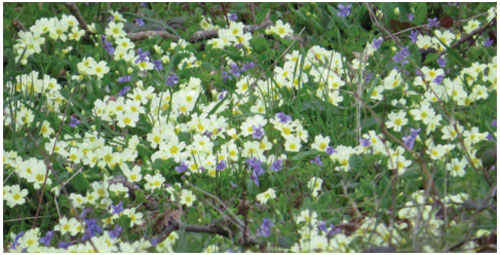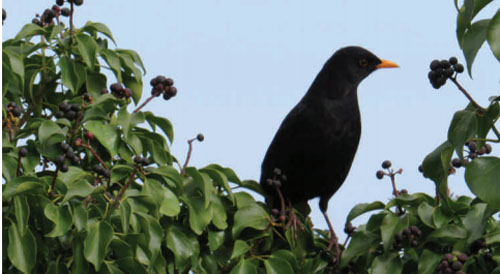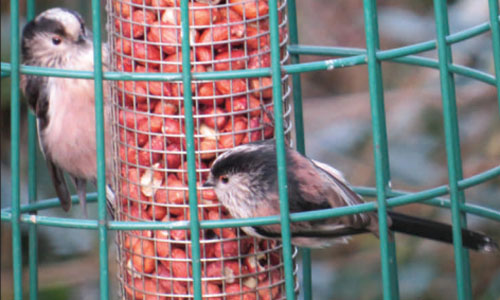| March
/ 2020 - Michael Ryan
|
| Although
April and May are peak times for Primroses some will already be in flower.
They’re not common in the park on Dalkey and Killiney Hills and
unfortunately one reason why is they are subject to being dug up and
taken by people who should know better. A friend commented that the
sort of people who do dig up wild flowers probably do it when the plants
are in flower, the worst time to move any plant, severely reducing their
chance of survival. There is one quiet stretch of path on the hills where they have been hanging on and I learnt some years ago it had been known as The Primrose Path going back many decades. A very interesting talk about the old paths and rights of way in Dalkey by a member of the Historical Society informed us that this particular primrose path was formerly part of the estate of the house that became Fitzpatrick’s Killiney Castle Hotel and the family living there had planted the original primroses alongside it. Primroses are particularly lovely native flora with cream yellow flowers and soft crinkly leaves, the plants subtly adorning woodland paths and banks are barely discernible in the undergrowth. But until looking up information online I wasn’t aware of its adaptation for self pollination which consists of two different types of flowers on individual plants named pin eyed and thrum eyed which ‘look almost identical apart from the position of the stigma (female part) and the anthers (male part holding the pollen) in the flower tube in the centre. In “pin” flowers the stigma is positioned at the top of the tube with the anthers positioned halfway down. In “thrum” flowers the stigma is positioned instead halfway down the tube with the anthers at the top.’ |
 Primroses and violets growing in a garden beside the Vico Road Photo: Michael Ryan |
| ’  Primroses,
photographed in March last year. Primroses,
photographed in March last year. Each plant bears two different types of flowers |
The purpose of the two different flowers is so pollinating insects will accumulate pollen on their bodies from one type of flower and spread it to the other type. No surprise to learn that, although earlier botanists might have noticed the adaptation, Charles Darwin was first to describe it. ‘Both flower types contain nectar at the bottom of the flower tube to attract insects to mediate pollination of the flowers. Darwin thought that the reciprocal positions of the anthers and the stigma in the two flower types would promote cross fertilisation. He suggested that when an insect visits a pin flower it inserts its proboscis (feeding tube) into the flower tube to feed on the nectar and pollen from the anthers would stick onto the proboscis about halfway down. If the insect then visits a thrum flower the pollen already onits proboscis is at the right level to meet and stick to the stigma about halfway down the flower tube, leading to cross fertilisation. At the same time pollen from the anthers at the top of the thrum flower tube is likely to stick to the top of the insect proboscis, the perfect position for cross-fertilising the next pin flower the insect visits’. So, not just lovely to behold, the primrose is a fabulous example of the wonders of evolution! At this time of year ivy proves again what a useful plant it is since having produced flowers in late summer, very valuable for butterflies and other pollinators its berries ripen in the spring, unlike most plants whose berries are ripe in autumn. Ivy berries, which apparently gram for gram contain nearly as many calories as Mars bars, should be fully ripe and have turned black by now (birds seem to have a preference for very dark berries) are very gratefully received by blackbirds, thrushes, blackcaps and woodpigeons. |
| Our poor old apple tree was already on its last legs, years since it had produced fruit and only a few sparse leaves left on mossy branches, but it still served a useful purpose, being the tree I hung most of my feeders from. Then Storm Ciara came and I found it split in half with all the feeders on the ground. I repositioned the feeders on adjoining trees and bushes and I could now get a better view of one of my nyjer feeders. The nyjer seeds are much smaller then sunflower seeds and have specifically designed feeders with tiny slits that slim billed birds like goldfinches and siskins can optimise but this nyjer feeder has larger apertures and I was surprised to see a bullfinch and then a little group of coal tits feeding on it, birds not normally known to take these seeds. |
 Blackbird feeding on ripe ivy berries in March |
 Long tailed tits on peanut feeder Photo: Michael Ryan |
A repositioned peanut feeder now gave me nice views of a pair of long tailed tits feeding and later it was fascinating to watch a female blackcap who took it over and would drive away any bird that tried to feed on the tower of nuts, far more then it could ever eat but it was determined to dine alone. |
DALKEY HOME PAGE | DALKEY COMMUNITY COUNCIL | DALKEY HERITAGE COMPANY | CANNONAID


